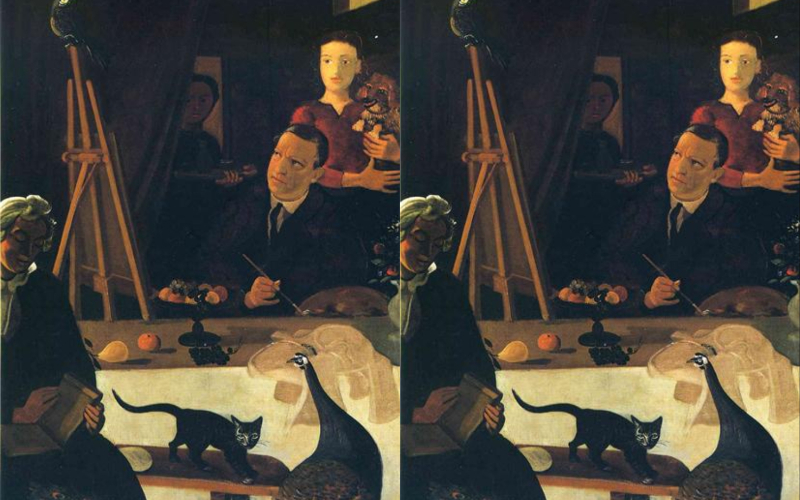More than a self-portrait or family portrait, André Derain’s The Painter and His Family (ca. 1939) is a manifesto of Derain’s thoughts and perspectives on painting.
The picture is an allegory of the life of an artist, much like Gustave Courbet’s The Artist’s Studio (1854–1855) from the 19th century.
Derain surrounded himself with feminine family members and pets, but Courbet displayed himself among admirers and members of the public. The setting did not accurately represent Derain’s working circumstances; he typically worked away from his family in a studio.
The focus on the private and home sphere may have been an expression of his wish to distance himself from the public and the deteriorating political climate of the interwar period. Derain during this time is particularly related to Diego Velasquez and other painters from the 17th century.
It’s believed that Velasquez’s work Las Meninas (1656), in which the artist is depicted at his easel painting the young girls of the Spanish royal court, served as the inspiration for The Painter and His Family.
Derain is shown working at his easel in the artwork while his wife Alice is seen reading a book of myths. This alludes to their shared fascination with myths and stories. Derain also depicted a cat that represented his interest in occult and mystical rituals and a peacock that was a reference to chivalric literature.
The picture is connected to Derain’s earlier piece The Artist in his Studio (1920), which also features the artist at an easel. A similar domestic scene is depicted in The Artist in His Studio, where a young boy is holding a bowl of fruit in the front and his wife Alice is reading in the background. Similar dark hues, primarily black with accents of green, red, and white, can be seen in the two paintings.
The scene in The Painter and His Family, however, has more figures and is more detailed. Alice’s sister Suzanne Géry can be seen in the background holding a tray, and her daughter Geneviève can be seen standing behind the artist holding a small dog.
From 1928 until 1935, Suzanne and Geneviève lived in the Derains’ home before moving to La Roseraie at Chambourcy, where they were neighbors with Derain and his wife on the other side of the courtyard. Geneviève was frequently depicted in Derain’s paintings as if she were his own daughter. Her face is radiant in The Painter and His Family, and because she is positioned behind the artist, she serves as a mentor or muse.
A medieval emblem of fidelity, the dog can also represent Geneviève’s commitment to the artist or perhaps Derain’s loyalty and devotion to the arts. The painter and his family’s atmosphere and symbolism are consistent with Derain’s conception of painting.
Regardless of its outward appearance, Derain thought that art should address the universal truths that characterize the human experience in order to “equalize time.” Derain asserted that the nature of art is private and intimate in both The Artist in his Studio and The Painter and His Family, and as a result, he portrayed himself creating in a home environment.











